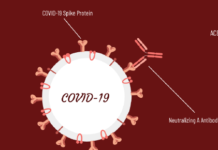by Anastasia Shemwell; Farnsley Middle School (Louisville, KY)
Lisa Walker (the author’s grandmother) has been diagnosed with Huntington’s Disease (HD).
“She has had this disease for 19 years now,” according to her daughter, Arlicia Scisney. She noticed that something was wrong in 1995 when she started having headaches, pain, and car accidents—she had 3 car accidents in one year and had her license suspended because of this.
According to the Huntington’s Disease Society of America (HDSA), HD is a fatal genetic disease that is passed down from parent to children. Huntington’s causes the destruction of cells in the deep brain structures that help start and control movement, so it affects the person’s ability to understand things, walk, and even speak.
According to the Genetic Science Learning Center at the University of Utah, a child of the affected parent has a 50% chance of getting it. Today, there are approximately 30,000 symptomatic Americans and more than 200,000 at risk of inheriting the disease.
In a 2016 study by University of California Davis researchers at the Huntington’s Disease Center of Excellence Clinic, mesenchymal stem cells were used to give the key brain protein growth factor to the brain which is extremely low in patients that have Huntington’s.
Mesenchymal cells are stem cells that can change into many other cell types according to the Mesenchymal Stem Cells Interest Group. This could be the beginning of finding a treatment for this disease. The team first injected the mice that have Huntington’s with mesenchymal cells to start the research. Then the mice were tested for six weeks to see how their behavior had changed. During the six weeks, they noticed that the mice with the mesenchymal stem cells had a huge decrease in anxiety and increased neuron growth activity compared to the control mice. Also mice that had mesenchymal stem cells had up to a 15% increased lifespan.
HDSA states that there are stages of symptoms for people that increase in severity after being diagnosed with Huntington’s. These stages include: changes in coordination, perhaps some involuntary movements, difficulty thinking through problems and often a depressed or irritable mood. Less able to work at their regular level and less functional in their regular activities at home, diminished speech and difficulty swallowing and eating food. In the final stages of the disease, the patient is dependent on others for their care. Choking becomes a major concern The person can no longer walk and will be unable to speak, although generally still able to comprehend language and retain awareness of family and friends. When a person with HD dies, the disease itself doesn’t kill the person. It is the complications of the disease, such as choking or infection.
According to Healthline, some symptoms that appear during the ages of 30-50 are depression, irritability, hallucinations, psychosis, uncontrollable movements, poor coordination, difficulty understanding new information and trouble making decisions
Walker’s symptoms include difficulty swallowing and eating food, she can no longer walk on her own without a walker, difficulty processing new information, and she has trouble making decisions.
The Mayo Clinic states that there are certain kinds of tests that can help you through the progression of HD, such as neuropsychological testing (overall picture of how well your brain works and for the doctor to see what would works best for you), psychiatric evaluation (to measure and observe a client’s behavior), brain imaging and function, genetic counseling, and a predictive genetic test.
Although the new mesenchymal stem cell therapy is not ready for humans yet, MedicineNet states that your doctor should prescribe medications, such as haloperidol and clonazepam, which help control movement, and also help control hallucinations delusions and violent outbursts problems associated with the disease.
According to Walker, she takes multiple medications each day to help her through the process of HD. Walker also said “It’s getting better with the pain when I take my medication.”

This work is licensed under a Creative Commons Attribution-NonCommercial-NoDerivs 3.0 Unported License













